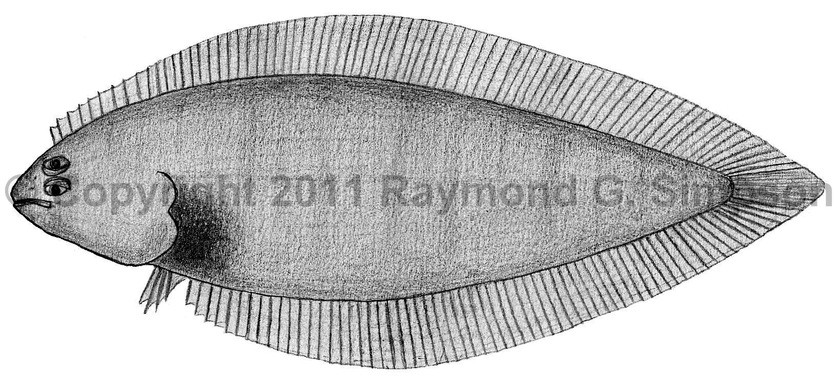
Common Name
Longtail Tonguefish
Year Described
Ginsburg, 1951
Identification
Dorsal Fin Rays: 77-85
Anal Fin Rays: 64-70
Pectoral Fin Rays: none
Pelvic Fin Rays: 4
Caudal Fin Rays: 12
Longitudinal Scale Rows: 62-70
Vertebrae: 43-46
Pterygiophore pattern (1st three interneural spaces): 1-3-2
Other diagnostic characters include: pupillary operculum absent, small teeth present on nearly entire ocular side dentary and 3/4 of the ocular side premaxilla (occasionally entirely toothed), ocular side lower jaw without fleshy ridge, and no scales on the blind side dorsal and anal fin rays.
Color
Uniformly light brown to yellowish without obvious banding or blotches. Peritoneum black. Dorsal and anal fins body colored with no obvious markings. Caudal fins also lightly colored, sometimes with a faint spot at base. Blind side pale, heavily covered in dark melanophores over entire surface (especially concentrated over fin bases).
Size
Adults from 31-60mm. Maximum size to 70mm.
Habitat
Inner continental shelf from 24-133m (usually 31-70m), over silty or muddy bottoms. Absent from areas with narrow continental shelves.
Range Map

Range
Continental waters from S. Florida and the NW Gulf of Mexico, to northern S. America. Rarely found at insular localities
References
Munroe, T.A. 1998. Systematics and ecology of western Atlantic tonguefishes (Symphurus: Cynoglossidae: Pleuronectiformes). Fish. Bull. 96(1):1-182.
Munroe, T. A. 2003. Bothidae (Pp. 1885-1895), Scophthalmidae (Pp. 1896-1897), Paralichthyidae (Pp. 1898-1921), Poecilopsettidae (Pp. 1922-1923), Achiridae (Pp. 1925-1933), Cynoglossidae (Pp. 1934-1959). In: Carpenter. 2003. The living marine resources of the Western Central Atlantic v. 3.